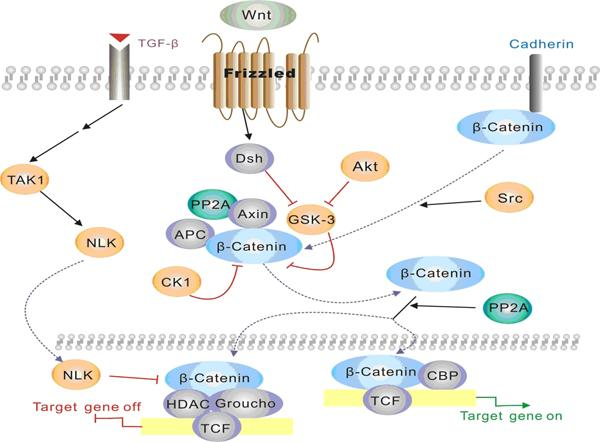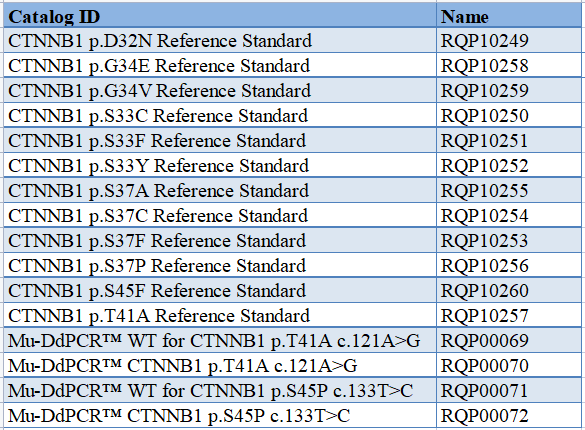CTNNB1 gene diagnostic standard
The CTNNB1 gene encodes the β-catenin protein, which is an adhesion junction protein that forms an adhesion junction (adherens junctions, ajs) complex with cadherin and α-catenin, which regulates cell growth and intercellular adhesion. , plays an important role in the construction and maintenance of the epithelial cell layer.
β-catenin is also involved in cell signaling as an important part of the Wnt signaling pathway. Certain proteins in this pathway attach (bind) to beta-catenin, which triggers a multi-step process that enables the protein to enter the nucleus. Once in the nucleus, beta-catenin interacts with other proteins to control the activity (expression) of specific genes. The Wnt signaling pathway promotes the growth and division of cells (proliferation) and helps determine the specific function a cell will perform (differentiation). Wnt signaling is known to be involved in many aspects of prenatal development. In adult tissues, this pathway plays a role in the maintenance and renewal of stem cells, cells that help repair tissue damage and can give rise to other types of cells.

Among its many activities, beta-catenin appears to play an important role in the normal function of hair follicles, the specialized structures in the skin where hair growth occurs. This protein is active in the cells that make up part of the hair follicle, called the stroma. These cells divide and mature to form the different components of the hair follicle and hair shaft. As the stromal cells divide, the hair shaft is pushed up and extended beyond the skin.
Gene mutation
Mutations in the CTNNB1 gene can cause an aggressive but noncancerous (benign) growth called a desmoid tumor. Mutations in the CTNNB1 gene are present in approximately 85% of nonhereditary (sporadic) desmoid tumors. These rare tumors arise from connective tissue that provides strength and flexibility to structures such as bones, ligaments, and muscles. The tumor is usually located in the abdomen, shoulder, upper arm, or thigh. The CTNNB1 gene mutations that cause desmoid tumors are somatic, meaning they are acquired during a person's lifetime and are only present in tumor cells. The CTNNB1 gene mutation that causes desmoid tumors usually occurs in a region of the gene called exon 3. They change a single amino acid in β-catenin. These mutations cause beta-catenin not to be broken down when it is no longer needed, and as a result the protein accumulates inside the cell. Excessive β-catenin causes uncontrolled cell proliferation, resulting in the formation of desmoid tumors.
Somatic mutations in the CTNNB1 gene are present in nearly all maoblastomas, a benign skin tumor associated with hair follicles. The CTNNB1 gene mutation found in maoblastoma has been described as a gain-of-function mutation. They cause β-catenin to stay on (constitutively active), which leads to abnormal activation of certain genes. These genes increase the proliferation and differentiation of cells associated with the follicle matrix. Cells divide too quickly and uncontrollably, leading to the formation of piloma. Almost all maoblastomas are benign, but very few are malignant. This malignancy is called maoblastoma. Like maoblastoma, maoblastoma has a somatic mutation in the CTNNB1 gene.
Mutations in the CTNNB1 gene were found in Wilms tumor, a rare type of kidney cancer that occurs almost exclusively in children. These mutations were somatic and occurred only in tumor-producing kidney cells. Mutations in the CTNNB1 gene in Wilms tumors cause the protein to become overactive. This active beta-catenin promotes Wnt signaling for longer than normal, which leads to unrestricted proliferation of kidney cells and tumor development.
Somatic mutations in the CTNNB1 gene have been found in several other cancers. These include colorectal, liver, thyroid, ovarian, endometrial and skin cancers, as well as a type of brain tumor called medulloblastoma, among others. Studies have shown that gain-of-function mutations in the CTNNB1 gene prevent β-catenin from breaking down when it is no longer needed, allowing the protein to build up inside cells. Excess β-catenin enters the nucleus and promotes unrestricted proliferation of cells, allowing cancerous tumors to develop.
For the detection of mutation types, we can provide diagnostic standards to ensure the detection limit, sensitivity and stability of the diagnostic method.

CTNNB1 p.D32N Reference Standard CBP10249

CTNNB1 p.S33C Reference Standard CBP10250

CTNNB1 p.S33F Reference Standard CBP10251

CTNNB1 p.S37F Reference Standard CBP10253

CTNNB1 p.S37C Reference Standard CBP10254

CTNNB1 p.T41A Reference Standard CBP10257

CTNNB1 p.G34E Reference Standard CBP10258

CTNNB1 p.G34V Reference Standard CBP10259

CTNNB1 p.S45F Reference Standard CBP10260


